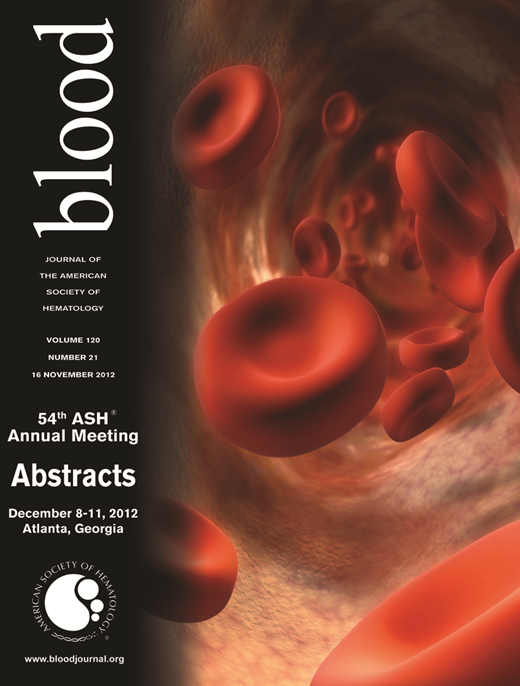Abstract
Abstract 184
Chronic Lymphocytic Leukemia (CLL) is characterized by the accumulation of mature B cells in peripheral blood (PB), bone marrow (BM) and lymph node (LN). Recent studies identified the LN as an important site of tumor cell activation and proliferation (Herishanu et al 2011). Using in vivo labeling of “newly-born” cells with deuterated water (2H2O; heavy water), the proliferation rate of CLL cells was estimated to range between 0.1 to >1% of the clone per day (Messmer et al 2005). Furthermore, a CXCR4dimCD5bright population of CLL cells in the PB contained more deuterium (2H)-labeled DNA and hence “recently-born cells than the CXCR4brightCD5dim population (Calissano et al 2011). Possible explanations for this observation include that CXCR4dimCD5bright cells proliferate more rapidly in the PB or that these cells are recent emigrants from tissues where proliferation occurs. As prior studies were performed on PB cells, the growth rates and characterization of the proliferative fraction of CLL cells in the LN remain unknown. Here we used 2H-labelling to directly compare cellular growth rates in PB, BM, and LN.
Patients drank 2H2O for 28 days; on day 13 an excisional LN biopsy and a BM aspirate were obtained. PB samples were obtained at baseline and on days 13 and 28. CLL cells were isolated using positive selection, or sorted based on reciprocal differences in CXCR4 and CD5 density for isolation of “proliferative” (CXCR4dimCD5bright), “intermediate” (CXCR4intCD5int), and “resting” (CXCR4brightCD5dim) fractions of CLL clones. 2H incorporation into the DNA of newly divided cells was measured by mass spectrometry. Raw values were normalized to the 2H2O content in total body water. Cellular growth rates were calculated by dividing the fraction of 2H-labeled cells by the number of days from the start of the labeling period.
To date, samples from 6 treatment-naïve CLL patients have been analyzed. On day 13, up to 16%, 9%, and 24% of the CLL cells sampled from PB, BM, and LN, respectively were 2H-labeled. The resulting mean estimated growth rate in % of the clone per day was for PB 0.41 (0.09 – 1.13), for BM 0.41 (0.28 – 0.68), and for LN 0.83 (0.31 – 1.84). The difference in growth rates between PB and LN was statistically significant (P<.02) and on average 2.5 times higher in the LN than in the PB. On day 28, the total fraction of 2H-labeled PB cells had further increased with the calculated growth rate in agreement with the growth rate in PB on day 13. CLL cells in the BM had a mean growth rate of 0.41% (0.28 – 0.68) of the clone per day, which was not significantly different than the growth rate in the PB. In fact in 2 patients the growth rate in the BM was lower than in the PB. The growth rates determined in LN and PB on day 13 were inversely correlated to the lymphocyte doubling time (r=-0.65 by Pearson correlation) and tended to be higher in patients with ZAP70 positive CLL. In keeping with the growth rates measured by 2H labeling, the fraction of Ki67-expressing CLL cells was higher in the LN than in the PB [% cells mean ± SD (PB = 3.8 ± 1.6, LN = 18.4 ± 3.1; P=.005)]. Interestingly, while the average CLL growth rate in LNs by 2H-labeling was 2.5-times the rate in PB, the Ki-67 positive fraction in LNs was 5-times the fraction in the PB, further supporting the view that active clonal proliferation occurs predominantly in the LN, from which recently-born cells enter the PB. Consistent with a prior study of PB CLL cells (Calissano et al 2011), the CXCR4dimCD5bright subset in LN exhibited higher 2H-labeling than the bulk of the clonal cells (intermediate fraction) and the resting fraction. These studies indicate that a CXCR4dimCD5bright subset exists in LN-resident CLL cells and has higher 2H-labeling than the rest of the clone. Specifically, the calculated growth rate of the CXCR4dimCD5bright subset was on average 3.2-times the growth rate of all CLL cells in the LN. Moreover, the data suggest that sampling the PB for newly-born cells is a reliable measure of the degree of proliferation occurring in LNs.
Taken together our data show that the proliferation rate of CLL cells is higher in the LN than in the BM and PB and suggest that some of the newborn cells exit the LN within days. A clonal subset of CXCR4dimCD5bright cells is present in both the LN and PB and might harbor the proliferative core of the disease.
Gatmaitan:KineMed: Employment. Emson:KineMed: Employment. Chiorazzi:KineMed: Dr. Chiorazzi holds stock options in KineMed, Inc. Other.
Supported by the Intramural Research Program of NHLBI, NIH and the NCI (CA81554). We thank our patients for undergoing additional procedures to make this research possible.
Author notes
Asterisk with author names denotes non-ASH members.

